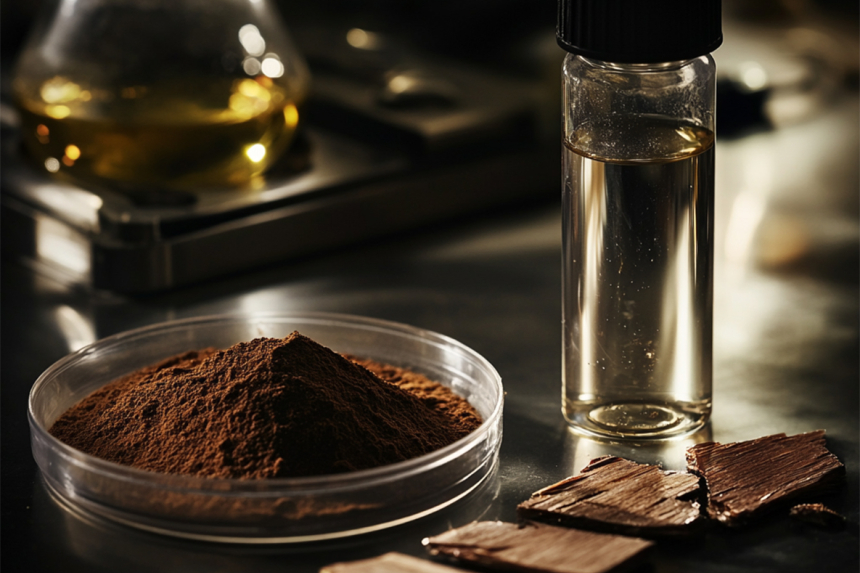From Residue to Potential: How Wood Becomes the Foundation for Outstanding Master’s Theses

Birch sawdust, lignocellulosic by-products, plastic waste, or seemingly unnecessary materials become the foundation for research whose outcomes reach far beyond the laboratory doors. This is vividly demonstrated by three master’s theses defended in 2025, all developed under the supervision of researchers at the Latvian State Institute of Wood Chemistry, and all of which received excellent evaluations.
Valērija Kudrjavceva, a student at the Faculty of Medicine and Life Sciences, Department of Chemistry, University of Latvia, developed her thesis under the supervision of Dr.habil.chem. Galija Šuļga. Valērija focused on birch sawdust — a biomass residue generally regarded as a low-value resource. The aim of the research was to extract soda lignin from this material and synthesize a chitosan-based polyelectrolyte complex. This complex was tested as a soil structuring and dust-suppressing agent.
Key insight: The combination of acidic and alkaline pre-treatments significantly improves both the quality and yield of extracted lignin.
Conclusion: The resulting complex proved more efficient and sustainable than industrially used lignosulfonates, offering an environmentally friendly alternative for agriculture and landscape management .
Dārta Līna Eihe, a master’s student in the same department at the University of Latvia, carried out her research under the supervision of Ph.D. Ralfs Pomilovskis. Her work focused on tall oil — a by-product of cellulose production. From its fatty acids, she synthesized a bio-based two-component polymer, which was then combined with various types of fibers. The result: composite materials with thermal and mechanical properties tailored to specific applications.
Key insight: With precise molecular modification, it is possible to create polymers from renewable resources that rival fossil-based materials in performance.
Conclusion: Materials developed from bioresources can be not only sustainable but also technologically adaptable for high-value applications .
Lotārs Olivers Vasiļjevs, also a student at the Faculty of Medicine and Life Sciences, completed his thesis under the supervision of Ph.D. Edgars Kuka. His research investigated the ageing behavior of existing materials — wood-plastic composites (WPCs) — and how they release microplastic particles. He developed a method to quantify microplastic particles emitted from WPCs under natural and artificial ageing conditions.
Key insight: The intensity of microplastic formation directly correlates with the type of plastic used and the properties of the filler — factors that can be influenced by adjusting material composition.
Conclusion: This research contributes significantly to improving the quality of WPCs and assessing microplastic risks, paving the way for more environmentally friendly materials .
All three theses illustrate a common idea: wood is not merely a raw material — it is a way of thinking. It becomes the experimental variable, a resource to be transformed in order to address pressing environmental and societal challenges.
At LSIWC, researchers are not just academic supervisors — they offer students real involvement in research where curiosity and critical questions can lead to genuine scientific discovery.